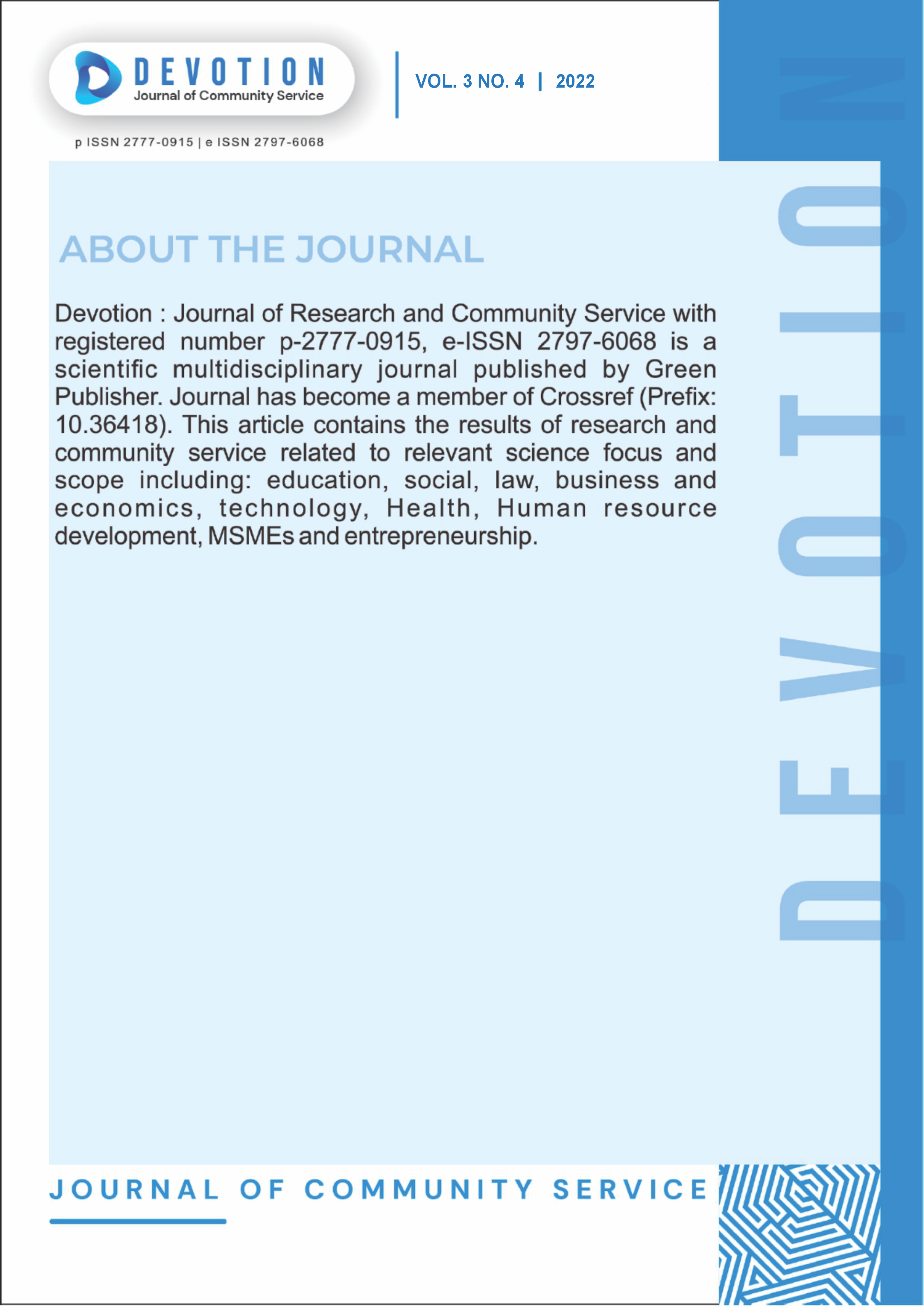Utilization of Coal Combustion Waste (Fly Ash) For Geopolymer Concrete as Green Concrete
DOI:
https://doi.org/10.36418/dev.v3i4.130Keywords:
Coal combustion waste, Fly ash, Geopolymer, ConcreteAbstract
The use of Portland Cement as a paste in conventional concrete is still often the primary/favourite choice in civil engineering construction. In time, cement production will cause harm to the environment, especially in the production process, and the availability of natural raw materials in cement production will dwindle. Therefore, it is necessary to find an innovative alternative to replace cement utilization. From the test matrix that has been carried out, it can be concluded that the waste from burning coal (fly ash), can be used as a substitute for Portland cement, and also at the composition of 16 moles – the ratio of sodium silicate to sodium hydroxide of 1.5 has a strong quality much better compression than the composition when using a 100% Portland cement mixtureFrom the test matrix that has been carried out, it can be concluded that the waste from burning coal (fly ash), can be used as a substitute for Portland cement, and also at the composition of 16 moles – the ratio of sodium silicate to sodium hydroxide of 1.5 has a strong quality. much better compression than the composition when using a 100% Portland cement mixture.
Published
Issue
Section
License
Copyright (c) 2022 Nugroho Arie Putranto

This work is licensed under a Creative Commons Attribution-ShareAlike 4.0 International License.
Authors who publish with this journal agree to the following terms:
- Authors retain copyright and grant the journal right of first publication with the work simultaneously licensed under a Creative Commons Attribution-ShareAlike 4.0 International. that allows others to share the work with an acknowledgement of the work's authorship and initial publication in this journal.
- Authors are able to enter into separate, additional contractual arrangements for the non-exclusive distribution of the journal's published version of the work (e.g., post it to an institutional repository or publish it in a book), with an acknowledgement of its initial publication in this journal.
- Authors are permitted and encouraged to post their work online (e.g., in institutional repositories or on their website) prior to and during the submission process, as it can lead to productive exchanges, as well as earlier and greater citation of published work.













